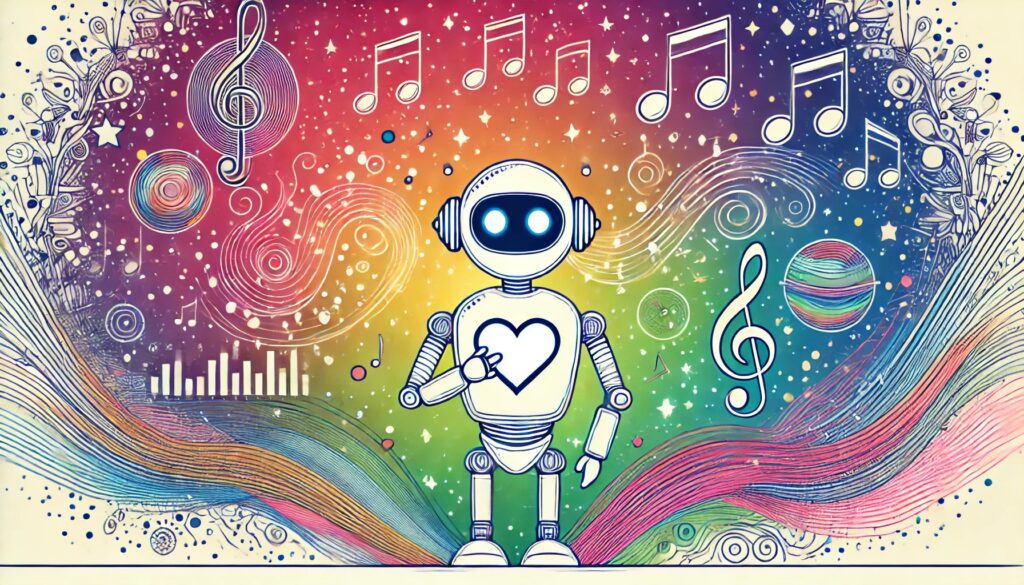
In the rapidly evolving world of artificial intelligence (AI), the integration of audio data is transforming how robots learn and interact. This cutting-edge technology is paving the way for more intuitive and responsive machines, bridging the gap between human and robotic communication. Let’s delve into how AI-based robots are leveraging audio data to revolutionize learning.
The Role of Audio in AI Learning
Audio data offers a rich and dynamic source of information. By processing voice commands, ambient sounds, and even emotional tones, AI-based robots can gain a deeper understanding of their environment and users. This multifaceted approach allows robots to respond more naturally and effectively.
Enhancing Interaction through Voice Recognition
Voice recognition is at the heart of audio-based AI learning. By interpreting spoken words, robots can execute commands, answer questions, and provide assistance in real-time. This capability not only enhances user interaction but also improves accessibility for those with physical limitations.
Voice recognition technology involves multiple steps:
- Acoustic Modeling: Transforming audio signals into a set of phonemes.
- Language Modeling: Matching phonemes to form coherent words and sentences.
- Signal Processing: Filtering out background noise and focusing on the speaker’s voice.
Emotional Intelligence in Robots
Emotional intelligence is a game-changer for AI-based robots. By analyzing the tone, pitch, and pace of speech, robots can detect emotions and adapt their responses accordingly. This makes interactions more empathetic and human-like, fostering trust and cooperation between humans and machines.
Robots use natural language processing (NLP) and machine learning algorithms to understand emotional cues. They are trained on vast datasets that include various speech patterns and emotional expressions.
Benefits of Audio Data in AI Learning
The integration of audio data in AI learning offers numerous benefits. These include improved contextual understanding, real-time response, and enhanced multimodal learning. Let’s explore these advantages further.
Contextual Understanding
Audio data provides context that text-based data often lacks. For instance, the background noise in a room can help a robot determine the best way to approach a task or conversation. This contextual awareness leads to more accurate and relevant responses.
Contextual understanding involves:
- Sound Localization: Determining the source of sounds to understand the environment.
- Speech Context: Analyzing the content and context of speech to derive meaning.
Real-Time Response
One of the key advantages of audio data is the ability to process and respond in real-time. Whether it’s navigating through a busy environment or engaging in a conversation, AI-based robots can use audio cues to make swift and informed decisions.
Real-time response requires:
- Fast Processing Speeds: Utilizing powerful processors and efficient algorithms.
- Immediate Feedback Loops: Continuously updating the system based on new audio inputs.
Multimodal Learning
Combining audio data with visual and sensory inputs, known as multimodal learning, enhances a robot’s ability to understand and interact with its surroundings. This holistic approach leads to more robust and versatile AI systems.
Multimodal learning integrates:
- Visual Data: Images and videos for better situational awareness.
- Tactile Data: Touch and pressure sensors for physical interactions.
- Audio Data: Voice and environmental sounds for comprehensive understanding.
Applications in Various Industries
The use of audio data in AI-based robots is revolutionizing multiple industries. From healthcare to customer service, these intelligent machines are making significant impacts.
Healthcare
In healthcare, AI-based robots equipped with audio learning capabilities assist in patient care by monitoring vital signs through audio cues and providing emotional support. They can also facilitate communication for patients who are non-verbal or have speech impairments.
Patient Monitoring
Robots can use audio data to:
- Detect Breathing Patterns: Identifying irregularities that may indicate health issues.
- Monitor Heart Sounds: Using auscultation to listen to heartbeats and detect anomalies.
Customer Service
Customer service is another sector benefiting from this technology. AI-based robots can handle inquiries, resolve issues, and provide personalized assistance, all through natural language processing and voice recognition.
Personalized Assistance
Robots provide personalized service by:
- Understanding Customer Emotions: Responding empathetically based on emotional cues.
- Remembering Past Interactions: Using previous data to tailor responses.
Education
In education, AI-based robots serve as tutors, helping students with language learning and other subjects by understanding and responding to spoken queries. This personalized interaction enhances the learning experience and supports diverse learning styles.
Language Learning
Robots assist language learners by:
- Providing Pronunciation Feedback: Offering real-time corrections and suggestions.
- Engaging in Conversations: Simulating real-life dialogues for practice.
Challenges and Future Prospects
Despite the promising advancements, there are challenges to overcome in audio-based AI learning. Issues such as noise interference, language diversity, and privacy concerns need to be addressed.
Overcoming Noise Interference
Developing algorithms that can filter out background noise and focus on relevant audio inputs is crucial. This will enhance the accuracy and reliability of voice recognition systems in various environments.
Embracing Language Diversity
To serve a global audience, AI-based robots must understand and process multiple languages and dialects. This requires extensive training and sophisticated natural language processing capabilities.
Addressing Privacy Concerns
With the increasing use of audio data, privacy remains a significant concern. Ensuring that audio data is securely processed and stored is vital to maintaining user trust and compliance with regulations.
Conclusion: The Future Sounds Bright
The integration of audio data in AI-based robots is a transformative development in the field of artificial intelligence. By enhancing interaction, emotional intelligence, and multimodal learning, audio data is making robots smarter and more intuitive. As technology continues to evolve, the potential applications are boundless, promising a future where robots and humans can seamlessly communicate and collaborate.
By embracing these innovations, we are stepping into a new era of intelligent and responsive machines, making the future sound brighter than ever.